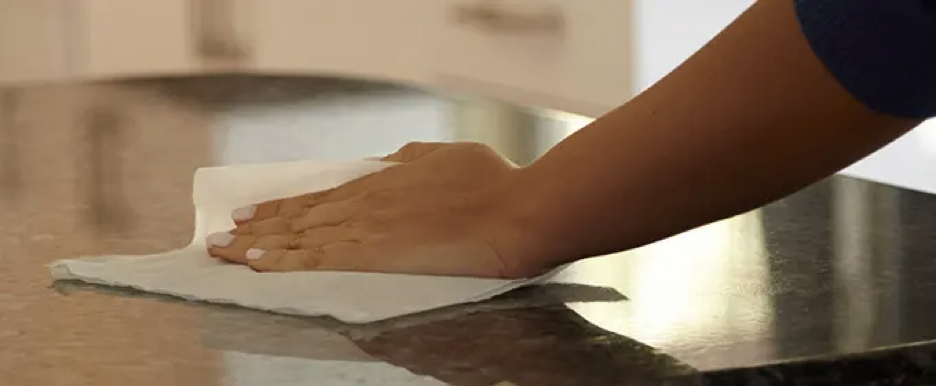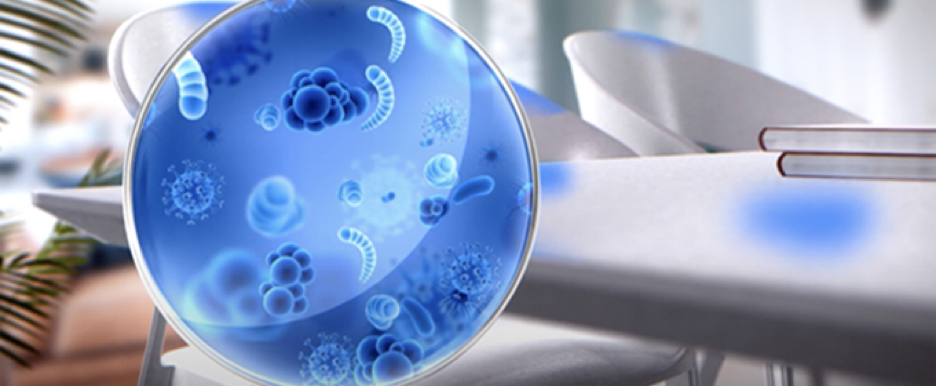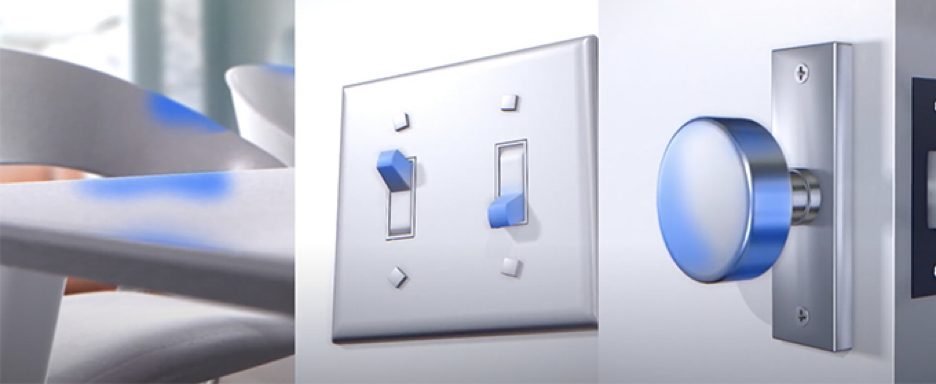Do you know the difference between cleaning, sanitizing, and disinfecting?
Though the terms may seem interchangeable, there’s a big difference between cleaning, sanitising, and disinfecting. We’re breaking it down and explaining why it’s important to know the difference so you can help keep your business protected and truly clean.

Let’s start with germs.
If it’s a surface someone touches, it probably has germs. Actually, even if nobody touches it, it probably still has germs. That’s because germs are everywhere. They live both inside and outside the human body. While some thrive in places like your gut and help with healthy digestion, others exist on your skin or other surfaces and are passed around constantly. There are many good germs that help our bodies stay in balance and actually work to build our immune systems. However, the bad germs can cause a breakdown in our bodies, leading to illness and infection. That’s why it’s important to know how to get rid of bad germs in order to help keep your community protected.1-3
So what’s the difference between cleaning, sanitising, and disinfecting?
- Headache
- Sore throat
- Cough
- Stuffy or runny nose
- Feeling weak and tired
For those who have been diagnosed with the flu, they may also have a fever, as well as muscle aches and pains.2,3
Cleaning comes first
Cleaning is the act of getting rid of dirt and mess where germs can grow. This includes wiping up food that has spilled or sweeping up dirt from outside. Even though cleaning can involve using soap and water, it’s still a surface level clean. That means that cleaning can help lower the number of germs, but it doesn’t generally kill germs4

Sanitising lowers the number of germs4
Sanitisation lowers the number of germs on surfaces or objects to levels judged as appropriate by public health standards.4 You’ll want to sanitise surfaces that come in contact with food. Sanitising doesn’t always require chemicals. It can be done with steam or extreme heat of at least 77°C, making it easier to sanitise fabric, carpet, and upholstery.5

Disinfecting kills germs4
Disinfecting kills germs on surfaces or objects. Disinfecting takes cleaning to the next level to help ensure germs don’t spread.4 By using products like Dettol® Disinfectant Surface Wipes and Dettol® Disinfectant Surface Sprays, you can kill 99.9% of germs* living on surfaces^ to help protect your community.6,7
*E. coli, Salmonella, S. aureus. ^When used as directed on hard, non-porous surfaces.

One more thing: Always wash your hands
Your hands deserve equal if not more attention as they are one of the main means for germs to travel. Washing hands is one of the most effective ways to help prevent the spread of germs. Make sure you’re thoroughly washing them for 20 seconds with soap and water or use a hand sanitiser when soap and water are not available.8,9

A one-two punch to knock out germs
Always remember, just because something looks clean, doesn’t mean it’s disinfected. The best way to help reduce your risk of spreading germs is to first clean your surfaces, removing any stuck-on dirt and grime, and then sanitise and/or disinfect.4
It is simple to help protect you and your community against the spread of germs.
- Clean your surfaces, removing any stuck-on dirt and grime
- Sanitise and/or disinfect with one of the Dettol® Disinfectant Surface Wipes or Dettol® Disinfectant Surface Sprays
Always read the label and follow the directions for use.



